Gao Chunlin achieves childhood dream as a mural expert replicating Tang Dynasty tomb paintings with passion and detail, Wang Ru reports.
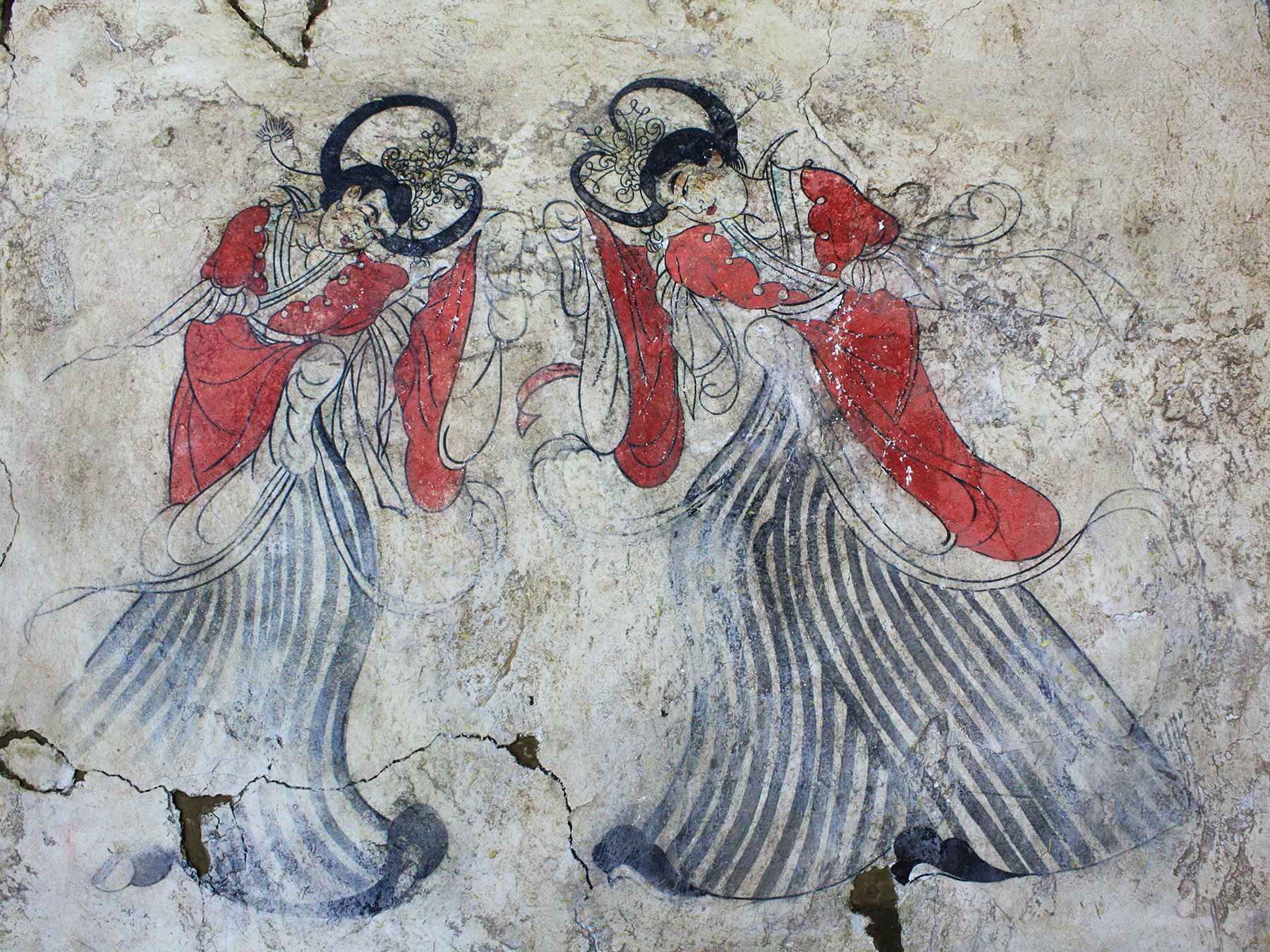
In the silence of an ancient tomb at night, a light remained aglow as people diligently worked within its chambers. Yet, these were not tomb raiders seeking treasures but three people immersed in copying the murals adorning the tomb walls, their brushes skillfully tracing the intricate designs onto paper laid out on painting desks. This tomb belonged to concubine Wei, a consort of Li Shimin, a Tang Dynasty (618-907) emperor, as a satellite tomb near Li's Zhaoling Mausoleum in Liquan county, Xianyang, Shaanxi province.
It was in 1990 when the copying efforts began as archaeologists discovered numerous exquisite murals in the tomb that required mural professionals to immediately record their original state for future studies and display.
READ MORE: Showcasing a dynamic era
One of the mural experts, Gao Chunlin, who was just 21 and a new employee of the Zhaoling Museum in Liquan, was especially hardworking. At midnight, his colleagues returned home to sleep but he insisted on drawing until 2 or 3 am each night, examining and imitating the ancient essence excitedly and resuming work at 6 am. Within two months, they managed to reproduce the intricate details of over 70 murals within the tomb before these precious artworks were relocated for enhanced preservation.
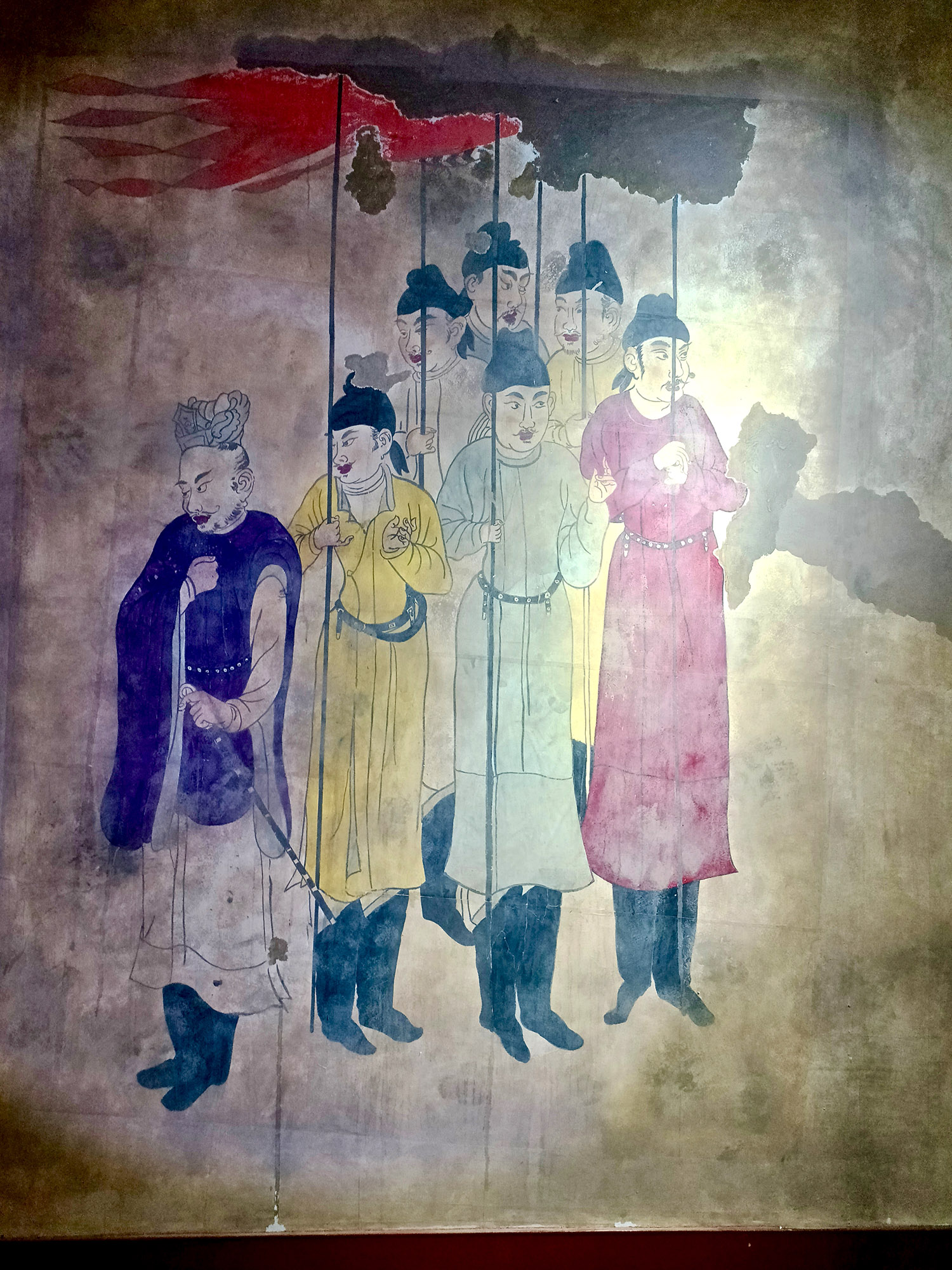
The following year, their replicas replaced the original murals when the tomb opened to the public.
This was one of the most unforgettable moments in Gao's career. As a mural expert devoted to replicating and studying murals for more than three decades, Gao has demonstrated that passion for one's career can transcend time.
Working in a grassroots museum with limited staff members, Gao must be flexible. For example, he restores pottery figurines, establishes files for cultural relics, and introduces artifacts on display for visitors. But what he cares about most are the murals.
During the Tang Dynasty, most people of higher social status had murals in tombs, often depicting their servants who would continue their services in the afterlife. As a result, the Tang tomb murals feature vivid human portraits.
Since scrolls from the Tang Dynasty are rarely inherited, only leaving copies made from later dynasties, the murals, as authentic Tang creations, hold immense value as genuine Tang images that directly convey information from that era, says Gao.
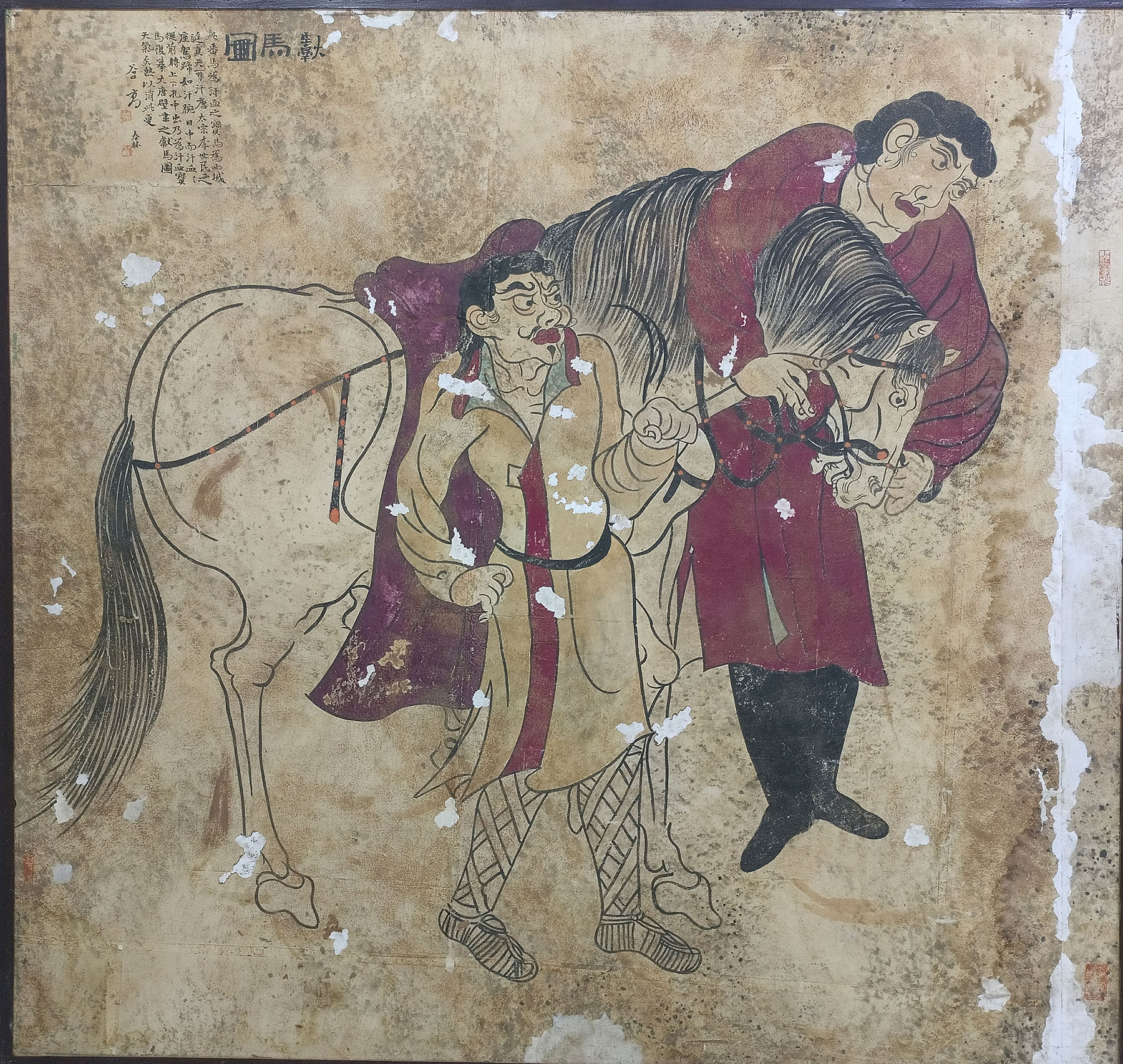
According to him, Zhaoling Mausoleum has more than 200 satellite tombs, with 42 being excavated to date. Gao says although all of them would have murals, only 17 still have murals remaining.
Since murals are fragile, they cannot be exhibited in the natural environment. "Surfaces people touch can grow bacteria, which leads to the loss of the murals' colorful layers. As a result, the real murals are difficult to display to the public, often replaced by replicas," says Gao.
Zhaoling Museum's mural exhibition hall houses many of Gao's replicas. He is now the only mural expert at the museum after his colleague Lu retired in 2002.
A mural often has three parts — a supporting wall structure, a ground layer made of lime powder and the surface layer the paintings are on. When Gao replicates a mural, he completes all the tasks himself, including making the wooden frame and the ground layer without help from carpenters or plasterers.
"Some people suggest that I invite other craftspeople to help me do the basic work but I'm worried they don't consider the final effect. By handling all aspects of the process, I have space to tailor the ground layer to achieve the desired final effect, whether opting for a smooth or coarse finish. This approach enables me to create more refined replicas," says Gao.
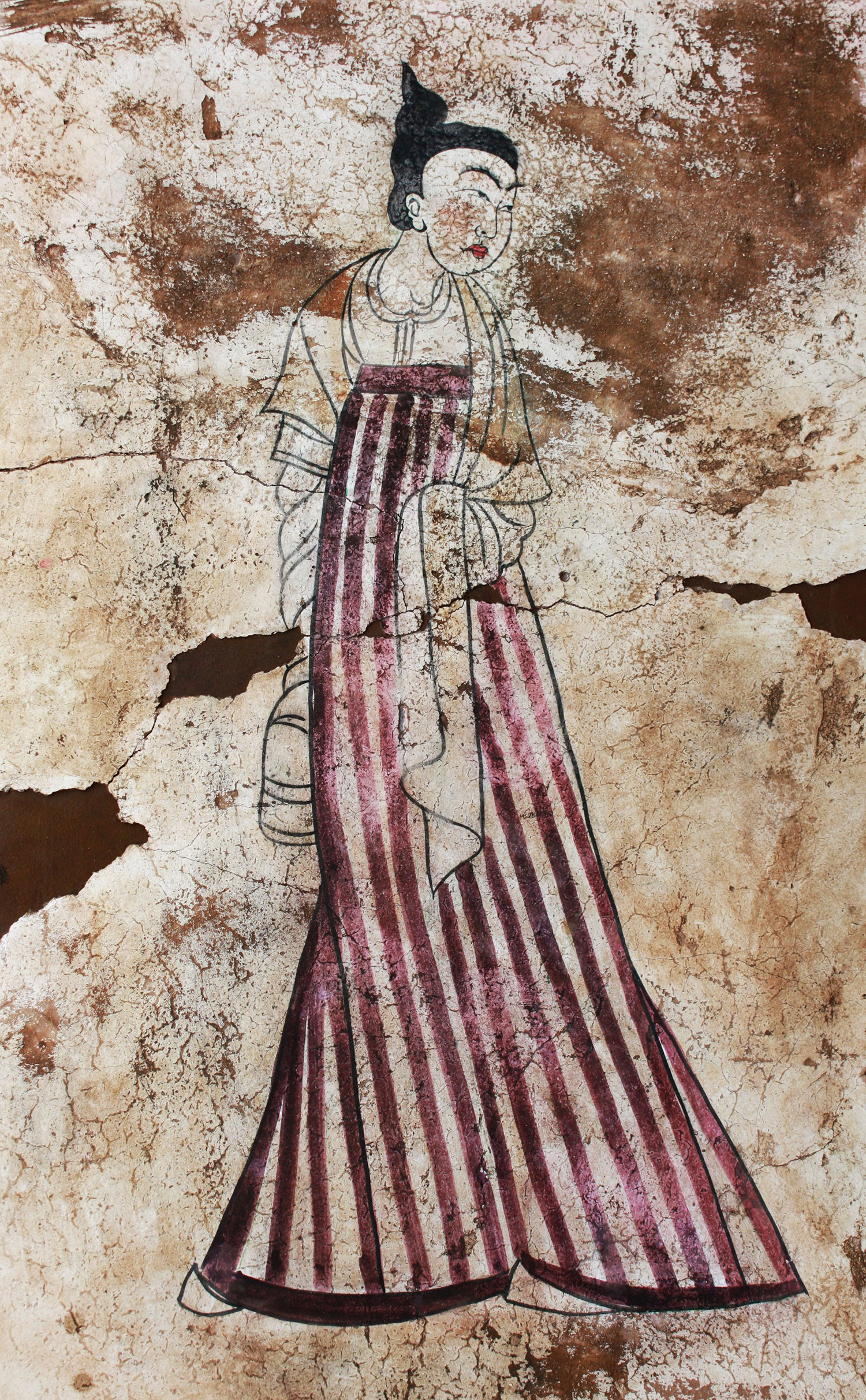
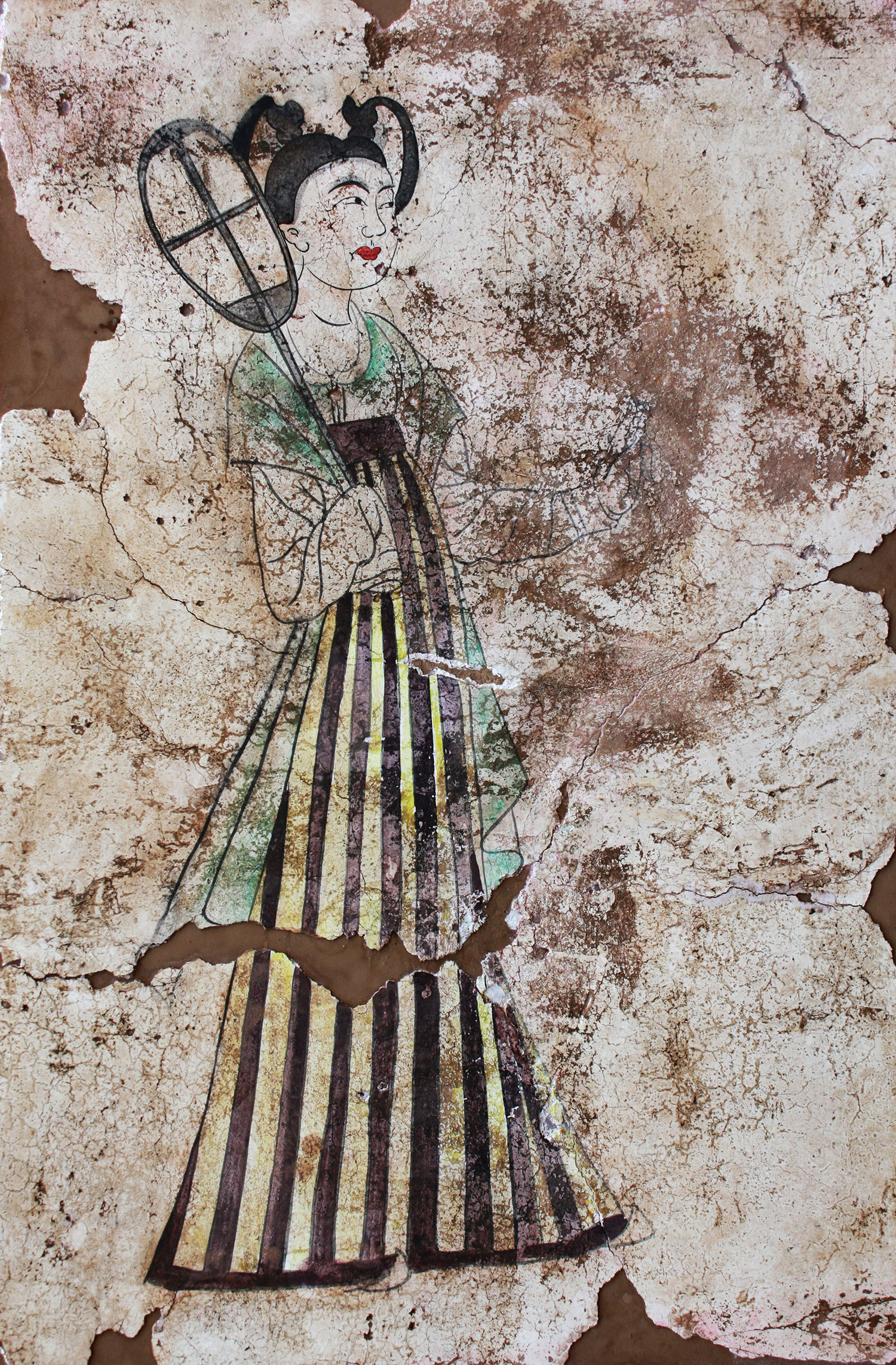
The painters of the Tang tomb murals didn't leave their names on them but Gao and other scholars have inferred they were probably distinguished Tang royal painters like Yan Liben, from their studies.
The murals were so well made that Gao finds when copying their patterns, mere imitations could hardly render the real temperament of the masterpieces.
For example, he tried copying a mural from the tomb of concubine Wei in 1991. At first, he simply imitated the patterns but always found his work unsatisfactory. Since he had limited time for painting, he felt anxious and tried to calm himself.
Then he put aside his painting brush, stood in front of the original mural, and stared at it carefully, trying to understand the story it told.
"It seems to be a guard of honor with seven people holding flags. They seemed to behave naturally and everyone's emotions were precisely portrayed. I put myself in their shoes, thinking what I would do and feel if I were a member of the team," says Gao.
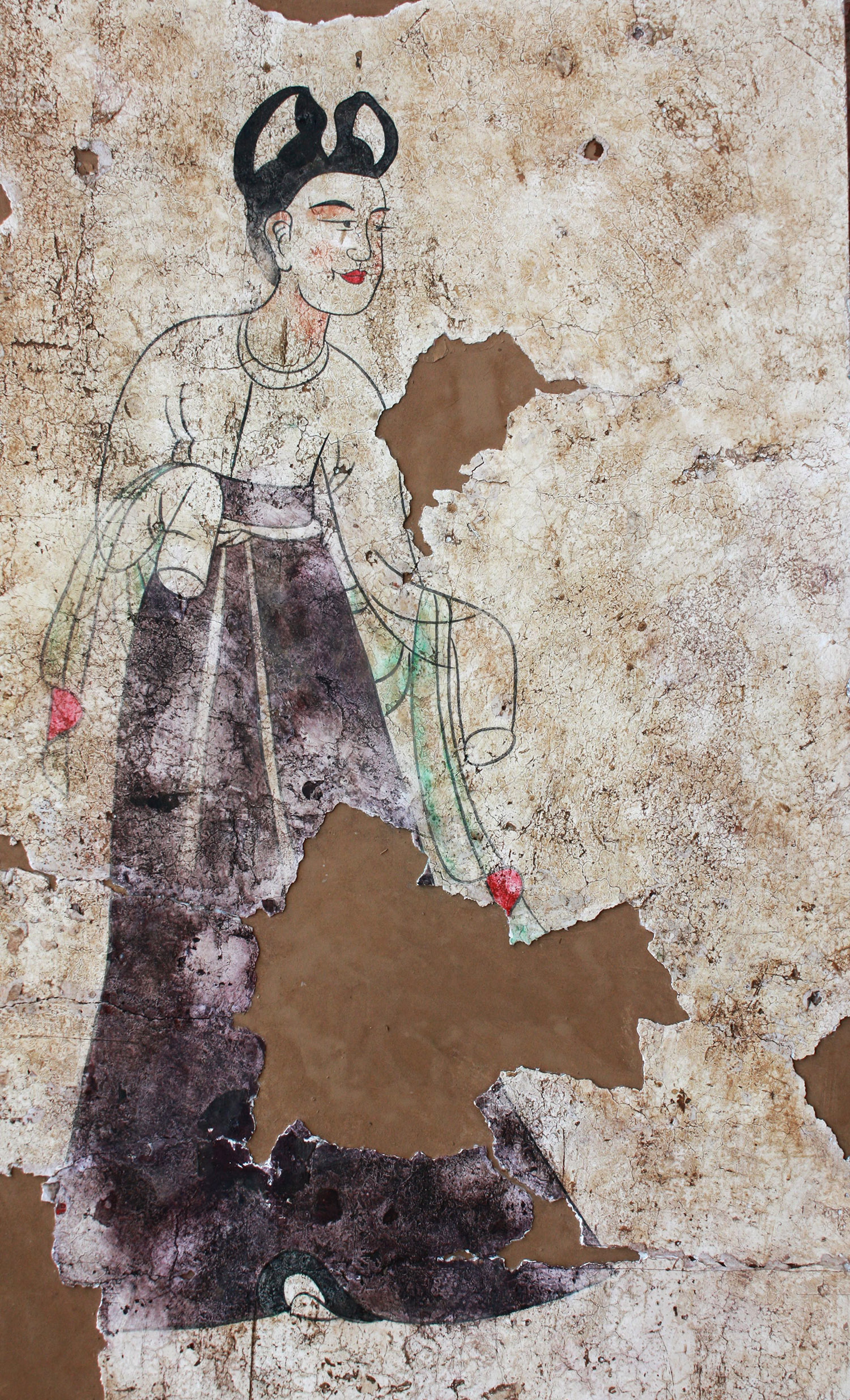

After close observation, he realized it described not a guard of honor in a working state but having a work break, possibly before or after receiving envoys. Amid this break, some engaged in conversation, others surveyed their environment, and a few appeared lost in contemplation. The intricate details allowed for a glimpse into the inner thoughts of each individual, he says.
"A seemingly ordinary moment, immortalized by a painter's brush on the wall, evokes a sense of enchantment, transporting you into the vivid tapestry of life during the Tang Dynasty," says Gao.
That morning, he woke at 3 am and went to the tomb to continue reading the mural until 5 am. After having breakfast, he began painting again, this time confident that he had seized the mural's essence.
"When we replicate murals, it's not a simple imitation. It's very difficult to make your copy approach the temperament of the original work, requiring the ability to truly understand the murals and Tang Dynasty culture, which comes from practice and experience," says Gao.
Over the years, Gao has replicated more than 10,000 murals, many of which have been collected by museums nationwide. In 2015, he won the top prize in a national Tang tomb mural replication competition.
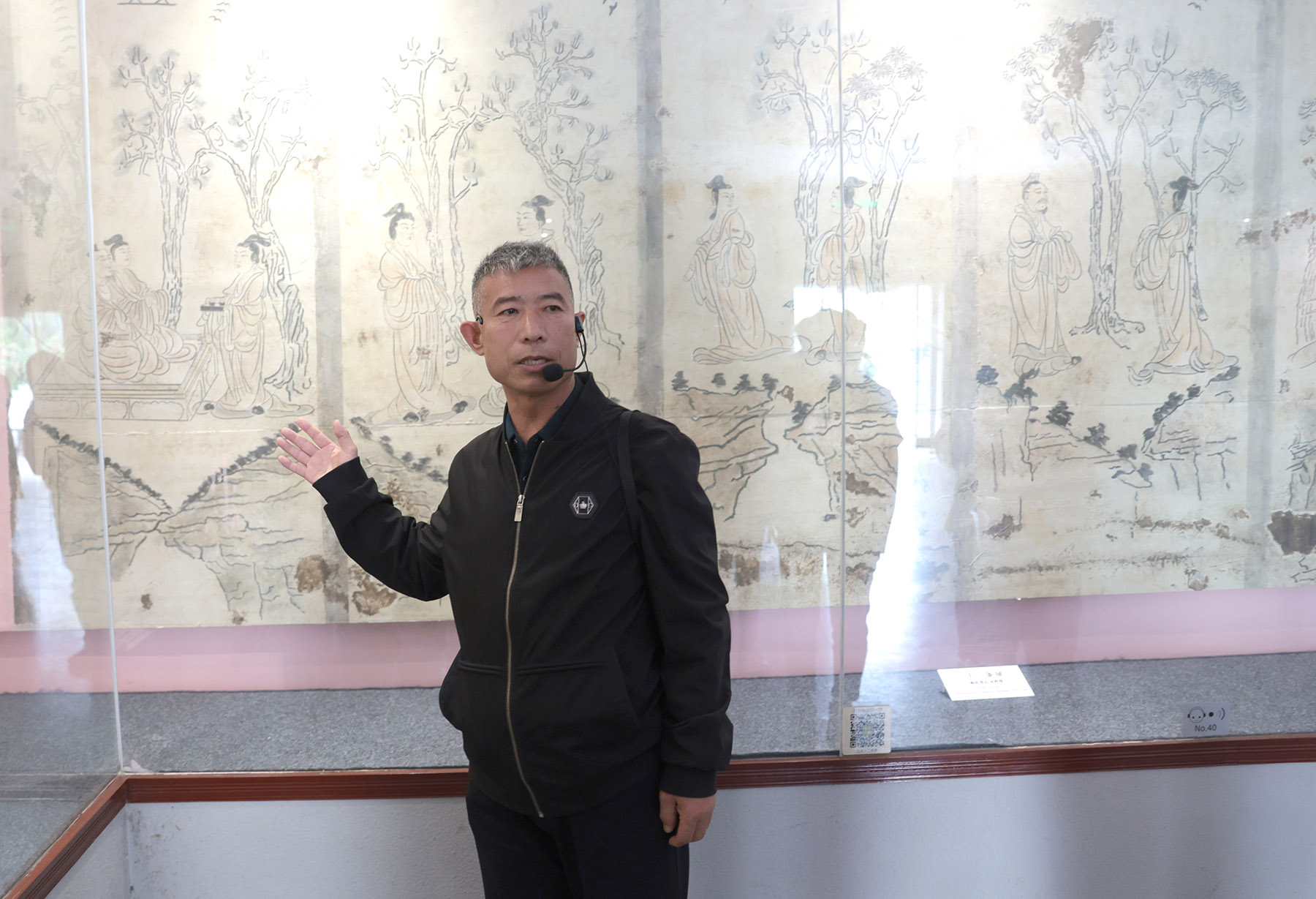
According to Wang Jianqi, a researcher at the Shaanxi History Museum specializing in Tang murals, the work Gao submitted to enter the competition, called Painting of Horse Tribute, was not only painted well but also showed Gao's understanding of the connotations of the mural.
"Gao has a rich accumulation of and an incredible passion for mural replicating. His murals are so vivid that they show us the splendor of the Tang Dynasty," says Wang.
Gao says the mural depicts two people bearing distinct features and attire of northern ethnic groups leading a white horse. The horse also displays unique traits typical of horses from Xiyu, or the Western Regions, which refers to today's Xinjiang Uygur autonomous region and part of Central Asia.
"It's a scene of people from different ethnic groups sending the horse as a gift to the Tang rulers. The horse leans its head against a person and its raised hoof suggests a readiness to follow him, while its open mouth conveys an emotional communication with the man, as if being reluctant to leave him," says Gao.
"The man embraces the horse's neck and lightly holds the reins, seeming to have mixed feelings about parting with the horse. The other man, possibly the coachman, furrows his brows and glares, his eyes revealing toughness and a hint of resignation," he adds.
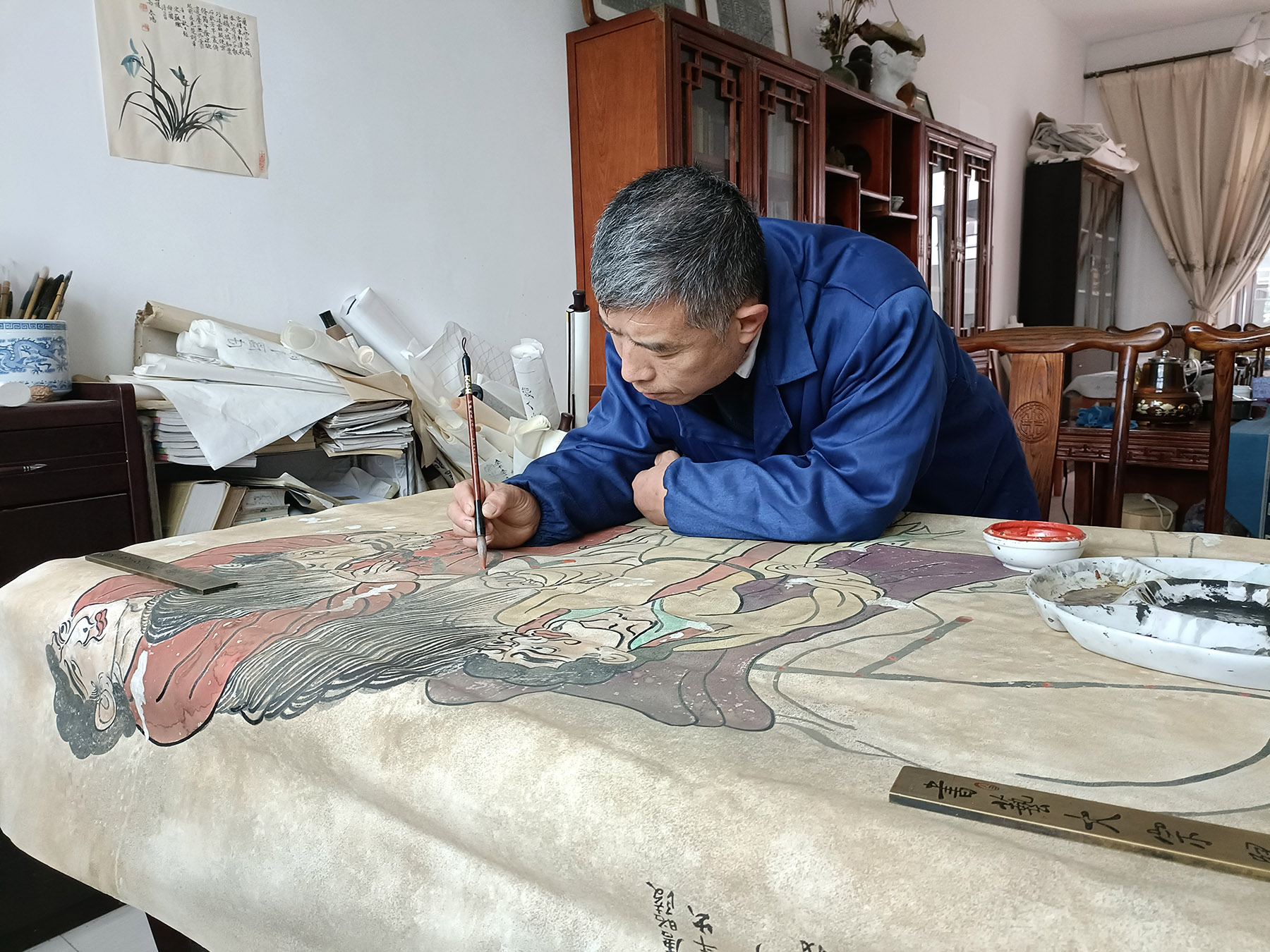
The Tang Dynasty is known as a prosperous era in Chinese history. During the reign of Li Shimin, he adopted inclusive policies toward ethnic groups from afar and was highly esteemed by them. Consequently, he often received gifts. The mural is a reflection of the grandeur of the Tang Dynasty and the good relationship between the central rulers and the ethnic groups, says Gao.
He mentions the images of figures in murals can exert influence on modern life. For example, people design costumes with elements from them, which are gaining increasing popularity. Moreover, TV series and films mirror the attire of these figures while using the Tang era as a background setting.
Born in an amateur artists' family in Liquan in 1969, Gao has held a strong interest in painting since childhood. He graduated from Shaanxi Normal University as a fine arts major and learned from painters Liu Wenxi and Chen Guangjian, who helped Gao lay a solid foundation in line drawing.
ALSO READ: Digging up our knowledge of the past
After graduating in 1990, he had to make a choice about where to work — Zhaoling Museum or the traffic authorities in Liquan. Without hesitation, he selected the museum to work in mural painting.
Gao recalls when he was a primary student on a school trip to the museum, he was so attracted by a replicated mural that he started sketching it immediately. Seeing his enthusiasm, his fine arts teacher Liu Suya encouraged him to hone his painting skills so that he could pursue a career at the museum doing what he loved for a lifetime.
"Luckily, her words proved prophetic. The greatest joy in life is pursuing something you are passionate about and can make a livelihood from," says Gao.
Contact the writer at wangru1@chinadaily.com.cn


